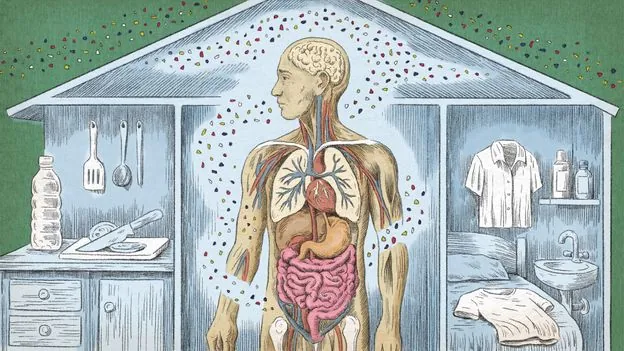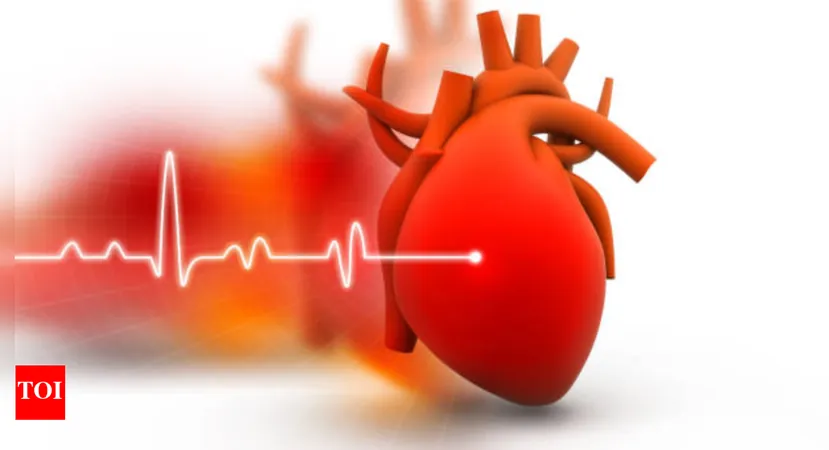
Are Microplastics Lurking in Your Kitchen? Here’s How to Cut Them Out!
2025-09-22
Author: Wai
Hidden Dangers: The Microplastics in Your Food
Did you know your kitchen is a hotbed for microplastics? These tiny particles are infiltrating everything from the meat on your plate to the vegetables in your salad. As we cook, unwelcome plastic flakes blend into our meals, and the truth is, we're consuming them more than ever before.
What Are Microplastics and How Do They Sneak In?
Microplastics are particles smaller than 5mm, and they can even be measured in nanometers! But how do they end up in our food? Plants can absorb them through contaminated soil, while animals consume them in their feed. A shocking study found that people consumed over six times more microplastics in 2018 than in 1990, with traces found in fruits, vegetables, honey, and even fish.
Easy Changes for Healthier Eating
Step into your kitchen—do you see plastic spatulas, water bottles, or any plastic packaging? All these common items can flake off tiny plastic pieces into your food. Sheela Sathyanarayana, an expert from the University of Washington, believes there’s plenty we can do to minimize our exposure. "There's a lot of low-hanging fruit in your house that’s easy to address," she explains. Just making small changes can give you a sense of control over what you consume.
Dodge the Plastic with These Tips!
1. **Wash Your Rice**: Studies have shown that rinsing rice can reduce microplastics by up to 40%! 2. **Opt for Whole Foods**: Conservative studies indicate that ultra-processed foods are more likely to be contaminated with plastics. 3. **Choose Glass or Stainless Steel**: These materials don’t release microplastics like plastic can.
The Water We Drink—A Microplastic Source?
Yes! Whether it’s bottled or tap water, studies reveal alarming levels of microplastics. Research shows that twisting bottle caps generates plastic particles, and a simple carbon filter can reduce microplastics in your drinking water by up to 90%.
What's in Your Cooking Pots?
Be cautious with what you cook with! Non-stick cookware can release a massive number of microplastics, especially when damaged or heated. Even some silicone utensils, though touted as safer, still pose risks. Consider choosing durable materials such as glass, stainless steel, or biodegradable alternatives.
Cleaning Up: More Microplastics in Your Kitchen?
Even your cleaning tools might be contributing to the problem. Kitchen sponges can shed millions of microplastics as they wear down. Focus on sustainable cleaning methods, and avoid single-use plastics.
The Bigger Picture: Impact on Health
While the full effects of consuming microplastics are still being researched, studies have found them in human organs including the brain and testicles. Some scientists are worried about disruptions to our gut microbiome or potential long-term health effects.
Take Action Now!
Don’t panic and trash all your plastic kitchenware. Instead, begin by replacing damaged items with plastic-free alternatives when it's time to say goodbye. Every bit counts when it comes to reducing microplastic contamination in our diets. Stay aware and make these conscious choices in your kitchen today!



 Brasil (PT)
Brasil (PT)
 Canada (EN)
Canada (EN)
 Chile (ES)
Chile (ES)
 Česko (CS)
Česko (CS)
 대한민국 (KO)
대한민국 (KO)
 España (ES)
España (ES)
 France (FR)
France (FR)
 Hong Kong (EN)
Hong Kong (EN)
 Italia (IT)
Italia (IT)
 日本 (JA)
日本 (JA)
 Magyarország (HU)
Magyarország (HU)
 Norge (NO)
Norge (NO)
 Polska (PL)
Polska (PL)
 Schweiz (DE)
Schweiz (DE)
 Singapore (EN)
Singapore (EN)
 Sverige (SV)
Sverige (SV)
 Suomi (FI)
Suomi (FI)
 Türkiye (TR)
Türkiye (TR)
 الإمارات العربية المتحدة (AR)
الإمارات العربية المتحدة (AR)